Wild columbine stands as one of North America’s most captivating native wildflowers. Gardeners discover a perfect blend of delicate beauty and remarkable adaptability when growing Wild Columbine from seed.
Known scientifically as Aquilegia canadensis, this charming perennial belongs to the buttercup family (Ranunculaceae). It carries several common names to include Eastern Red Columbine, Canadian Columbine, and Red columbine.
This herbaceous perennial is native to woodland and rocky slopes in eastern North America. Its range extends from Nova Scotia to Saskatchewan and throughout most states east of the Rockies.
Wild columbine displays remarkable size variation. Its height ranges from 6 inches to 4 feet tall, depending on soil, light, moisture, and other conditions. Wild columbine typically blooms for about a month in May and June, perfectly timed with hummingbirds returning from their winter sojourns south of the border.
This wildflower thrives in USDA zones 2-9 and prefers partial shade conditions but will tolerate more sun with adequate moisture. Home gardeners prize wild columbine for its exceptional value in native plant gardens, pollinator gardens, and woodland landscapes. This species is readily propagated from seed, blooming in its second year, and once started, increases rapidly by self-seeding.
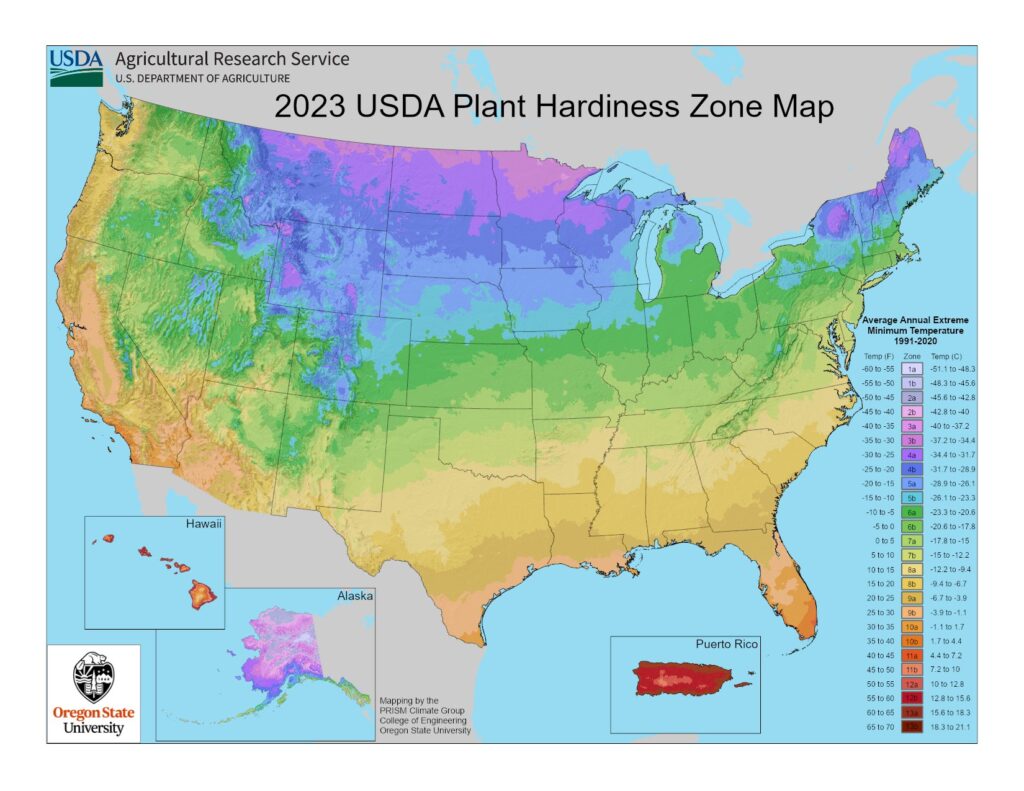
Wild columbine excels in ornamental landscapes, particularly in shade gardens, rock gardens, and naturalized areas where its light, airy texture combines well with other native woodland plants.
The plant provides exceptional wildlife benefits, serving as a critical food source for returning ruby-throated hummingbirds in spring and a host plant for the Columbine Duskywing butterfly (Erynnis lucilius).
Seeds are consumed by finches and buntings, making wild columbine a cornerstone species for supporting both resident and migratory wildlife throughout its native range.
Plant Profile: Understanding Wild Columbine’s Garden Characteristics
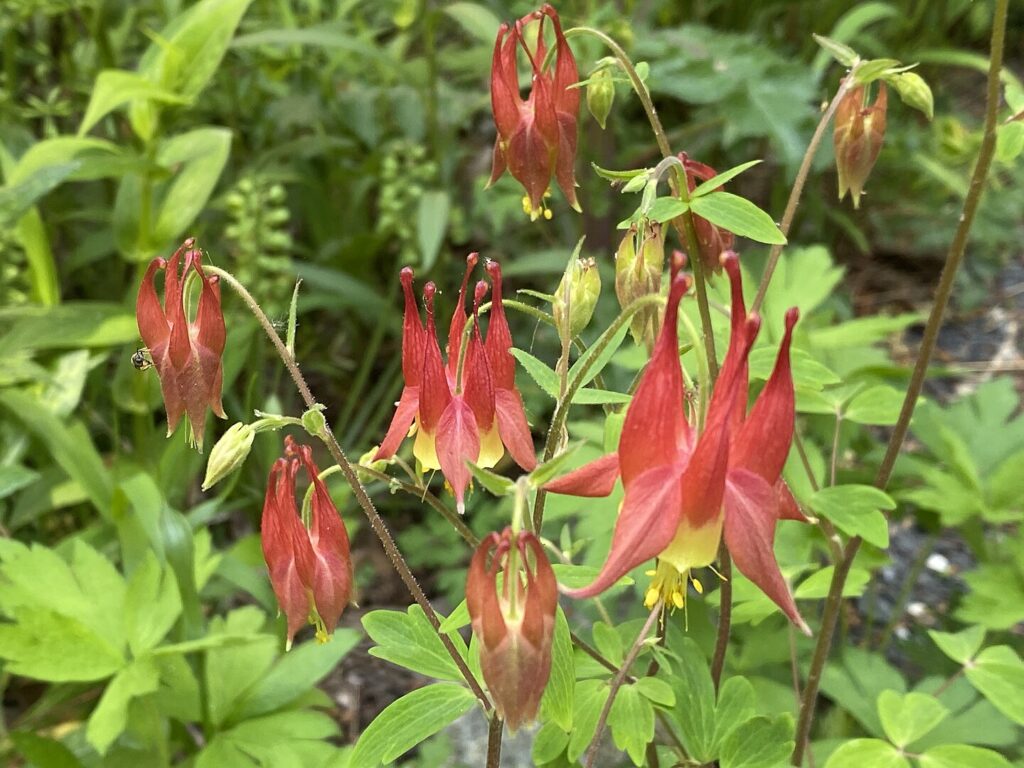
Wild columbine displays remarkable size variation, with height ranging from 6 inches to 4 feet tall, depending on soil, light, moisture, and other conditions, though most plants typically reach 24 to 36 inches tall and spread up to 1.5 feet wide.
This adaptable perennial thrives in diverse garden settings, including woodland gardens, shade borders, rock gardens, naturalized areas, and cottage gardens.
Wild columbine occurs naturally in rich rocky woods, north-facing slopes, cliffs, pastures, and roadside banks, making it particularly well-suited for challenging garden locations where other plants struggle.
Wild columbine’s primary characteristics include:
- Lifespan: Perennial, around 7 years per plant
- Mature height: 6 inches to 4 feet tall
- Mature spread: Up to 1.5 feet wide
- Growth habit: Erect, sparingly branched perennial
- Bloom color: Red sepals with yellow petals
- Bloom size: 1-2 inches long
- Blooming period: One month in May and June
- Seed germination: 3-4 weeks
- Time to maturity: Second year flowering
- Hardiness zones: USDA zones 2-9
Timing Your Wild Columbine Seed Starting for Success
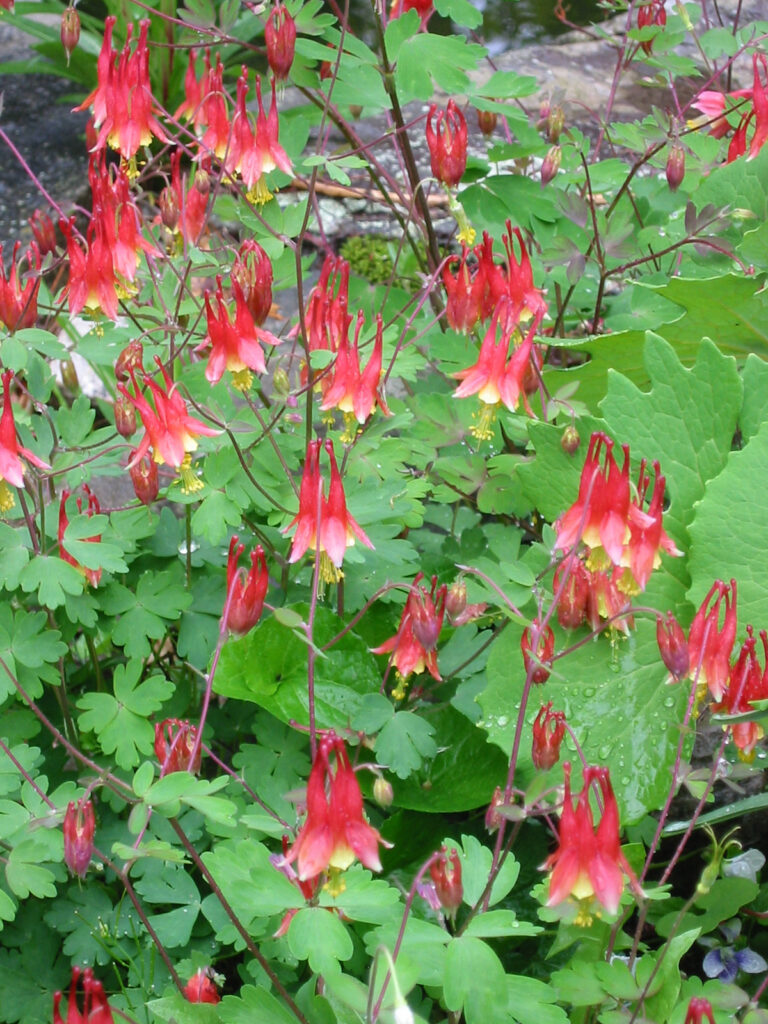
Wild columbine seeds require cold stratification to break dormancy and germinate reliably, making timing crucial for both indoor and outdoor sowing methods.
Zones 3-5
After cold stratification, start seeds indoors 6-8 weeks before the last frost date.
For direct sowing outdoors, plant seeds in early fall after temperatures begin dropping consistently, or wait until early spring after the soil can be worked but before hot weather arrives.
Zones 6-8
Begin indoor seed starting 6-8 weeks before the last frost, after cold stratification.
Direct sow outdoors in fall once temperatures consistently drop below 50°F, or sow in early spring after soil thaws but before temperatures exceed 70°F consistently.
Zones 9-12
Start seeds indoors during the winter months (December through February) when natural cooling can assist germination.
For direct sowing, plant in late fall through early winter when temperatures remain consistently cool, as wild columbine struggles in hot climates and benefits from extended cool periods for establishment.
Preparing Wild Columbine Seeds for Optimal Germination
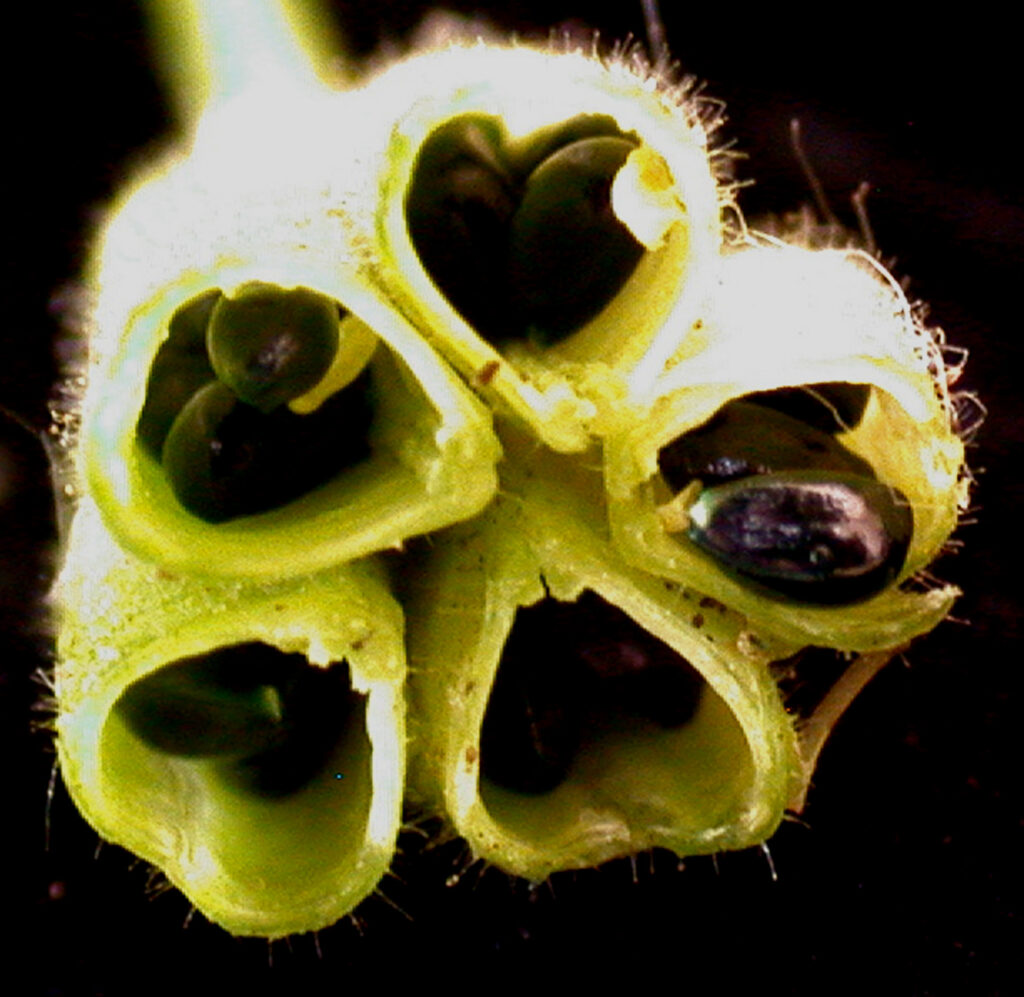
Wild columbine seeds typically require 3-4 weeks to germinate under optimal conditions. However, germination can extend up to 30 days depending on environmental factors and seed preparation methods.
Cold Stratification Requirements
Wild columbine seeds require cold stratification to break dormancy and achieve reliable germination. Seeds need 60 days of cold, moist stratification at temperatures between 35-40°F.
To stratify seeds, mix them with slightly damp vermiculite or clean sand in a sealed plastic bag and refrigerate for the full 60-day period. Check periodically to ensure the medium remains barely moist but not waterlogged.
Additional Germination Tips
Wild columbine seeds require light to germinate effectively, so avoid covering them with soil when sowing. Simply press seeds lightly into the soil surface or scatter them on top of prepared seedbeds.
For indoor starting, maintain temperatures between 60-70°F for optimal germination rates. Seeds sown outdoors in fall will naturally stratify over winter, eliminating the need for artificial cold treatment and often resulting in more reliable spring germination than artificially stratified seeds.
Creating the Perfect Garden Environment for Wild Columbine
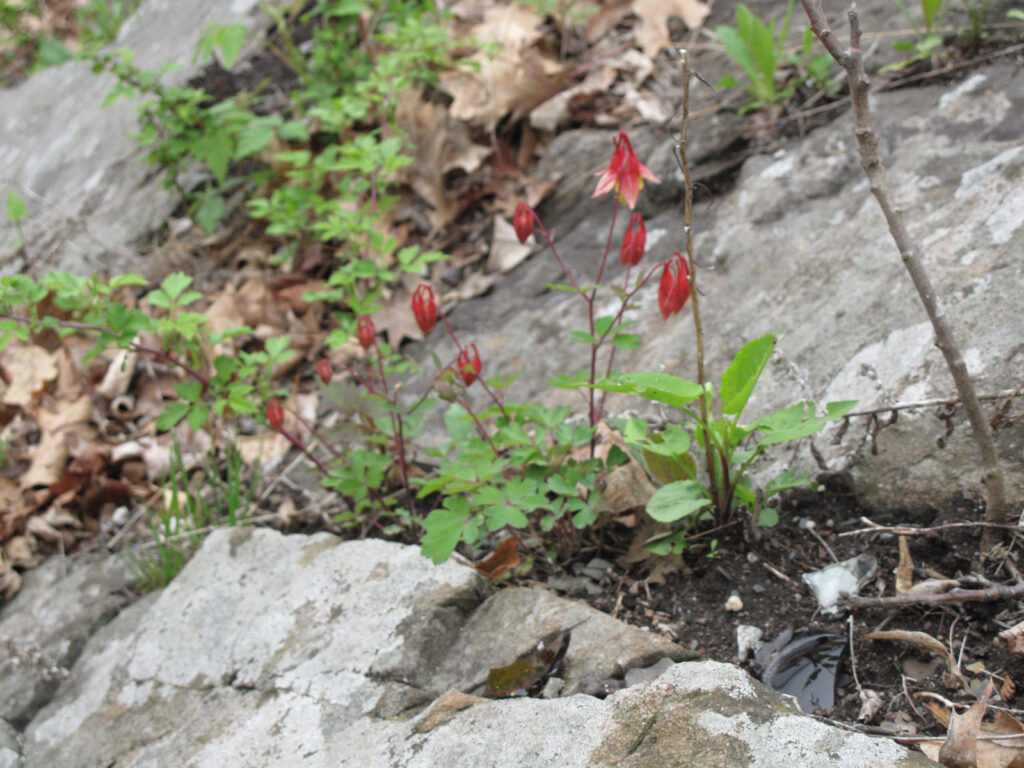
Successful wild columbine cultivation begins with thoughtful garden bed preparation that mimics this native plant’s natural woodland habitat of rocky slopes, woodland edges, and forest clearings.
Choosing a Location
Select a garden location offering protection from harsh afternoon sun with adequate air circulation. Wild columbine excels in woodland gardens, shaded borders, rock gardens, and naturalized areas.
Choose sites with morning sun and afternoon shade, avoiding low-lying areas prone to standing water.
Light Requirements
Wild columbine prefers partial shade with 3-6 hours of direct sunlight daily. The plant tolerates full sun in cooler climates with consistent moisture, but benefits from afternoon shade in warmer regions. Deep shade reduces flowering and creates open growth habits.
Moisture
Maintain medium to medium-dry moisture levels, avoiding drought stress and waterlogged conditions. Wild columbine develops deep taproots for drought tolerance once established.
Provide supplemental watering during extended dry periods, allowing soil to dry slightly between waterings.
Soil Type Preferred
Wild columbine thrives in well-draining soil with pH between 6.0-7.0. The plant tolerates clay, loam, sandy, and rocky soils provided drainage is adequate.
Incorporate 2-3 inches of organic matter like compost into the planting area. However, avoid overly fertile conditions that promote soft growth and reduce longevity.
You’re absolutely right! Here’s the soil preparation information formatted to integrate into the “Creating the Perfect Garden Environment for Wild Columbine” section:
Soil Preparation
Begin by removing all weeds, grass, and debris from the planting area, then loosen soil to a depth of 6-8 inches using a garden fork, breaking up compacted areas that could impede drainage.
Work 2-3 inches of compost or well-aged leaf mold into the top 4-6 inches of soil to improve drainage and provide organic matter. Avoid fresh manure or high-nitrogen amendments that promote excessive foliage growth.
In heavy clay soils, add coarse sand or perlite to improve drainage, as wild columbine is sensitive to waterlogged conditions.
Rake the soil surface smooth and level, removing stones and debris. The final prepared bed should have a fine, crumbly texture for good seed-to-soil contact while maintaining loose structure for proper drainage. Water lightly and allow the bed to settle for a few days before sowing or planting.
Mulch soil with organic amendments such as hay, rough compost, or grass clippings to protect soil biology and prevent rapid moisture loss.
Growing Wild Columbine by Direct-Sown Seeds
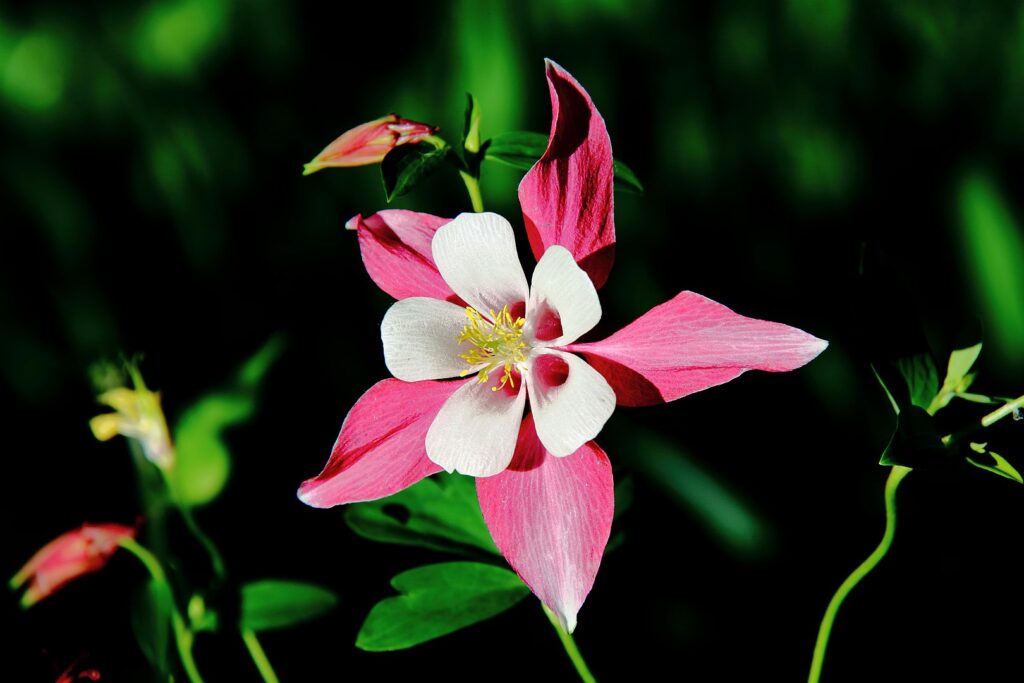
Direct sowing wild columbine seeds in the garden offers the most natural approach to establishing these native wildflowers, eliminating transplant shock and often resulting in stronger plants than those started indoors.
Step-by-Step Direct Sowing Guide
Depth to Plant
Remove mulch if necessary and scatter seeds directly on the prepared soil surface without covering them. Wild columbine seeds require light for germination, so simply press lightly into the soil or cover with a thin dusting of fine sand no more than 1/8 inch deep.
Moisture Requirements for Seeds
Maintain consistent, light moisture throughout germination without creating waterlogged conditions. Water gently with a fine spray to avoid disturbing surface-sown seeds.
Keep the top inch of soil consistently moist but not saturated, checking daily during dry periods.
Optimal Temperature for Germination
Seeds germinate best when soil temperatures remain between 60-70°F. For fall sowing, plant after soil temperatures drop below 50°F to prevent premature germination. Spring-sown seeds benefit from cool, consistent temperatures.
Light Requirements for Germination
Wild columbine seeds require light to germinate and must not be buried. Provide bright, indirect light or partial shade during germination, avoiding both deep shade and intense direct sunlight.
Time to Germination
Expect germination in 3-4 weeks under optimal conditions, though seeds may take up to 30 days.
Fall-sown seeds remain dormant through winter and germinate the following spring when soil temperatures consistently exceed 50°F.
Starting Wild Columbine Seeds Indoors
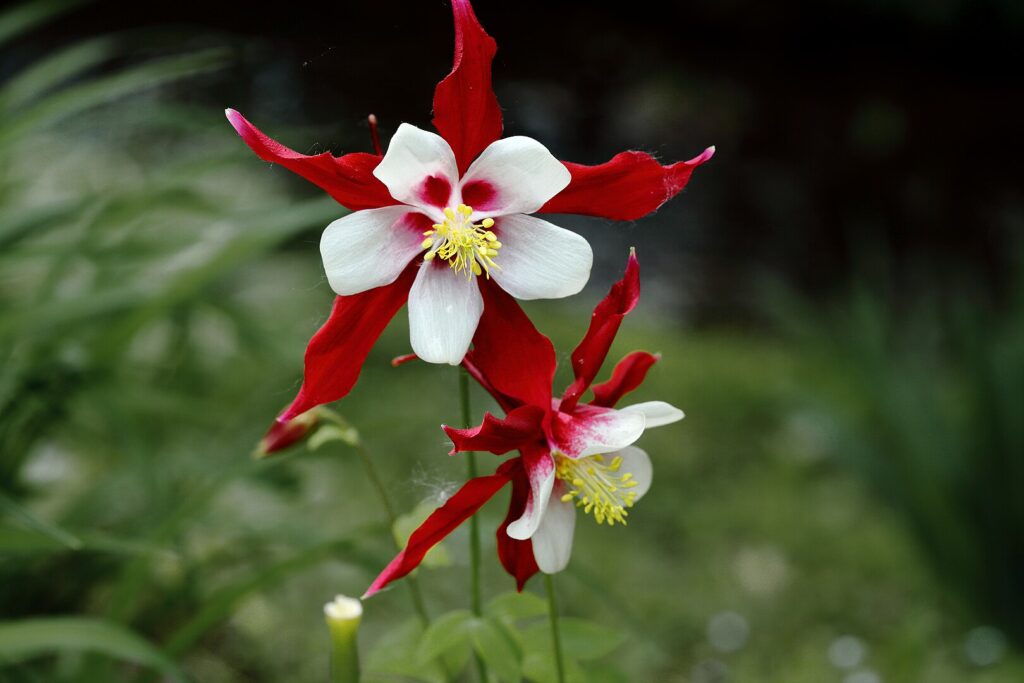
Starting wild columbine seeds indoors provides greater control over germination conditions and allows for earlier garden establishment, though these delicate seedlings require careful handling during transplanting.
Seed Starting Mix
Use a well-draining, sterile seed-starting mix combining equal parts peat moss, vermiculite, and perlite. Avoid heavy potting soils or mixes with added fertilizers, as wild columbine prefers lean growing conditions. The mix should retain moisture while providing excellent drainage to prevent damping-off.
Container Selection
Choose shallow containers with drainage holes, such as seed trays, cell packs, or 2-3 inch pots. Cell trays with individual compartments work best for minimizing root disturbance during transplanting. Ensure containers are at least 2 inches deep to accommodate initial root development.
Planting Depth
Scatter seeds on the moistened soil surface without covering them. Wild columbine seeds require light for germination, so simply press lightly into the surface to ensure good seed-to-soil contact while maintaining light exposure.
Moisture Requirements
Keep soil consistently moist but not waterlogged throughout germination. Use a spray bottle or fine misting system to avoid disturbing surface-sown seeds. Cover containers with clear plastic or humidity domes to maintain consistent moisture levels.
Optimal Temperature
Maintain soil temperatures between 60-70°F for best germination rates. Use heat mats if necessary to achieve consistent temperatures, but remove once germination begins to prevent overheating.
Light Requirements
Provide bright, indirect light immediately after sowing, as seeds need light to germinate. Once seedlings emerge, provide 12-16 hours of fluorescent or LED grow lights positioned 4-6 inches above plants.
Time to Germination
With cold stratification, expect germination in 2-4 weeks, though some seeds may take up to 30 days. Germination typically occurs gradually over several weeks rather than all at once.
When to Plant Out Wild Columbine Plants
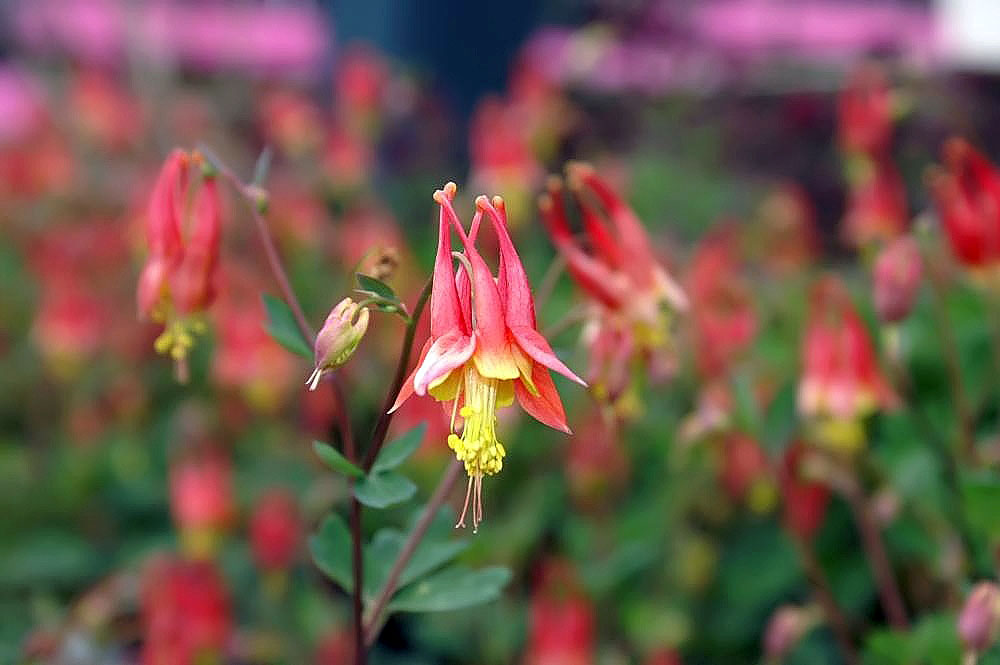
Wild columbine seedlings are ready for garden transplanting when they develop their first set of true leaves and reach 3-4 inches tall, typically 8-12 weeks after germination.
Seedlings should have well-developed root systems visible through drainage holes and sturdy stems that can withstand gentle handling.
Plan transplanting for after the last frost date when soil temperatures consistently remain above 50°F.
Hardening Off Wild Columbine Plants
Begin the hardening off process 7-10 days before transplanting by gradually exposing seedlings to outdoor conditions to prevent transplant shock.
- Place plants in a shaded, protected location for 2-3 hours on day one
- Increase outdoor exposure time by 1-2 hours daily
- Progress from shade to filtered sunlight, then to morning sun with afternoon shade
- Protect from strong winds, heavy rain, and temperature extremes
- Reduce watering frequency slightly to encourage stronger root development
- Complete the process over 7-10 days before permanent planting
Planting Wild Columbine in the Garden
Plant wild columbine seedlings in prepared garden beds during cool, overcast weather or in late afternoon to minimize transplant stress. Handle seedlings gently, as their delicate root systems are easily damaged.
- Depth: Plant at the same depth as the seedling was growing in its container, with the crown level with the soil surface
- Spacing: Space plants 12-18 inches apart to allow for mature spread and good air circulation
- Mulching: Apply a 2-3 inch layer of organic mulch such as shredded leaves or bark chips around plants, keeping mulch 2 inches away from the crown to prevent rot
- Watering after planting: Water thoroughly immediately after planting, then maintain consistent moisture for the first 4-6 weeks until roots establish, watering deeply but less frequently as plants mature
Caring for Growing Wild Columbine Plants
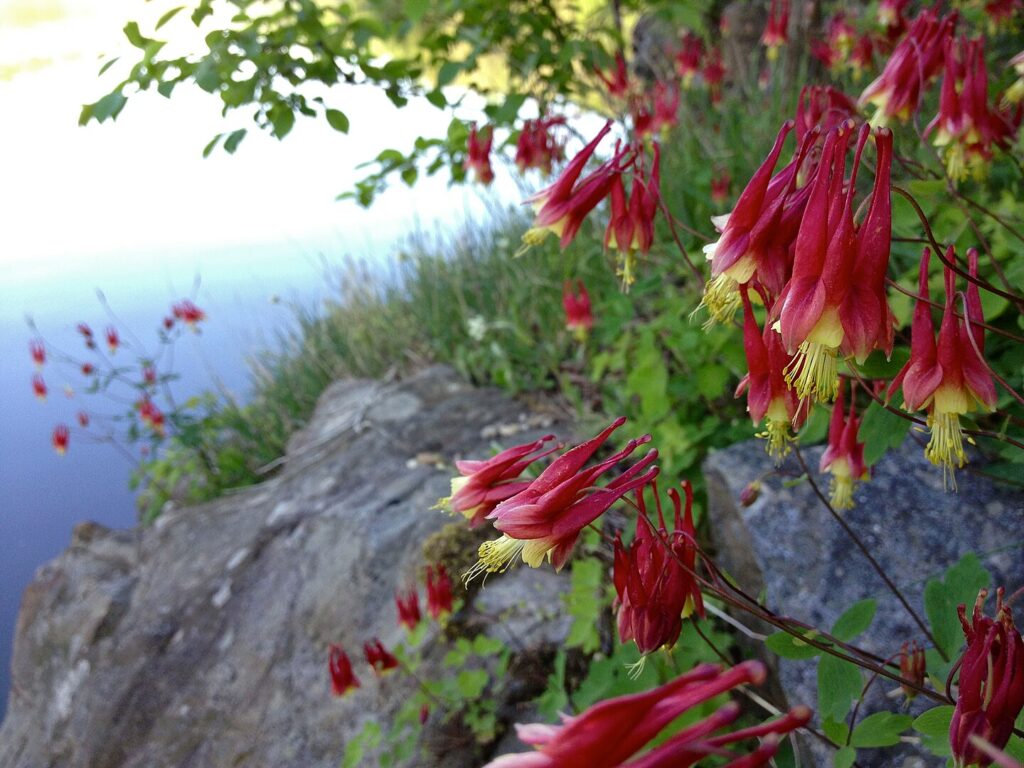
Once established, wild columbine requires minimal maintenance and thrives with a hands-off approach that mimics its natural woodland environment.
Watering
Water deeply during extended dry periods, allowing soil to dry slightly between waterings. Established plants tolerate drought well due to their deep taproot system.
Avoid overwatering in summer, as excessive moisture can cause crown rot. Reduce watering frequency in fall as plants enter dormancy.
Feeding
Wild columbine requires little to no fertilization and actually prefers lean soils. A light application of compost in early spring provides sufficient nutrients.
Avoid high-nitrogen fertilizers, which promote soft growth and reduce plant longevity. Overly rich soils can cause weak stems and shorter plant lifespan.
Weeding
Remove weeds regularly around young plants to reduce competition for moisture and nutrients. Hand-pull weeds carefully to avoid disturbing shallow feeder roots.
Established plants naturally suppress most weeds through their spreading habit and dense foliage. Organic mulch helps suppress weed growth while conserving moisture.
Pest Control
Wild columbine is remarkably resistant to most pests and diseases. Leaf miners occasionally create serpentine trails in leaves but cause only cosmetic damage and rarely affect plant health. Remove severely damaged leaves if desired, but treatment is typically unnecessary.
The plant is naturally deer and rabbit-resistant due to its mildly toxic compounds.
Tips and Tricks for Growing Wild Columbine
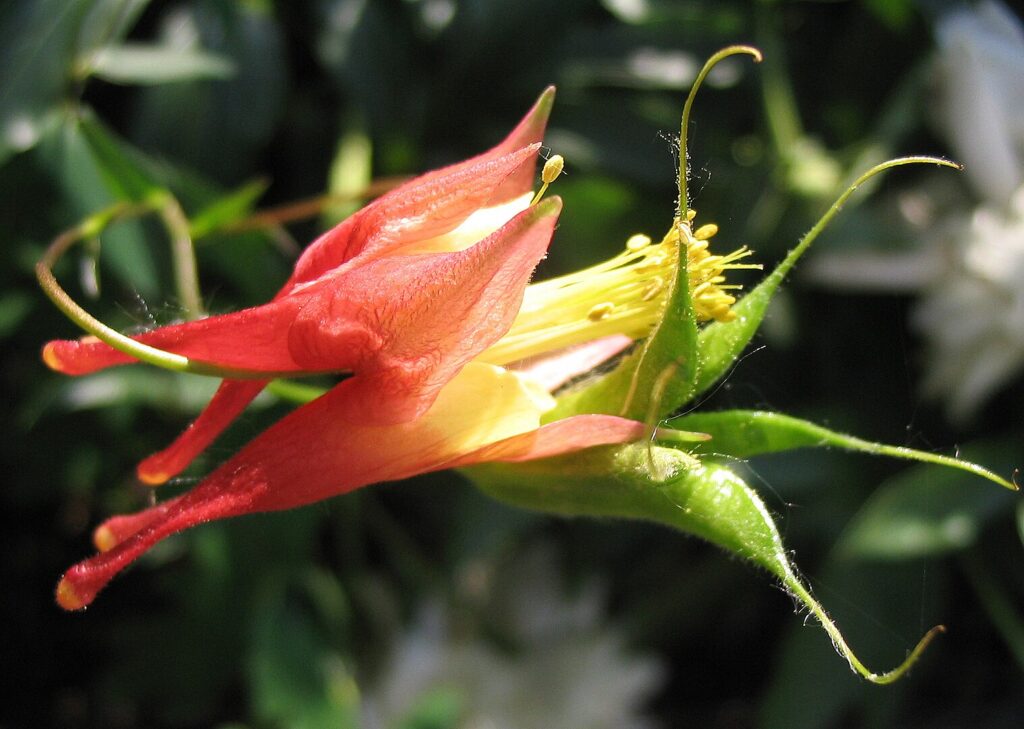
• Deadheading: Remove spent flowers to encourage a second flush of blooms and extend the flowering season by up to 6 weeks
• Self-seeding management: Allow some seed heads to mature if you want natural spread, or remove all spent flowers to prevent unwanted seedlings
• Foliage care: Cut back deteriorating foliage to ground level in midsummer after blooming to encourage fresh growth and tidier appearance
• Colony establishment: Plant in groups of 3-5 for best visual impact and to encourage natural colony formation through self-seeding
• Hybridization prevention: Keep different columbine species widely separated to maintain pure strains, as wild columbine readily cross-pollinates
• Summer dormancy: Don’t panic if plants go dormant during hot, dry summers – they typically return with fresh foliage in fall
• Seedling transplanting: Move volunteer seedlings while young, as mature plants develop deep taproots that make transplanting difficult
• Winter preparation: Leave seed heads standing through winter to provide food for birds, then clean up in early spring before new growth emerges
Preserving and Propagating Wild Columbine
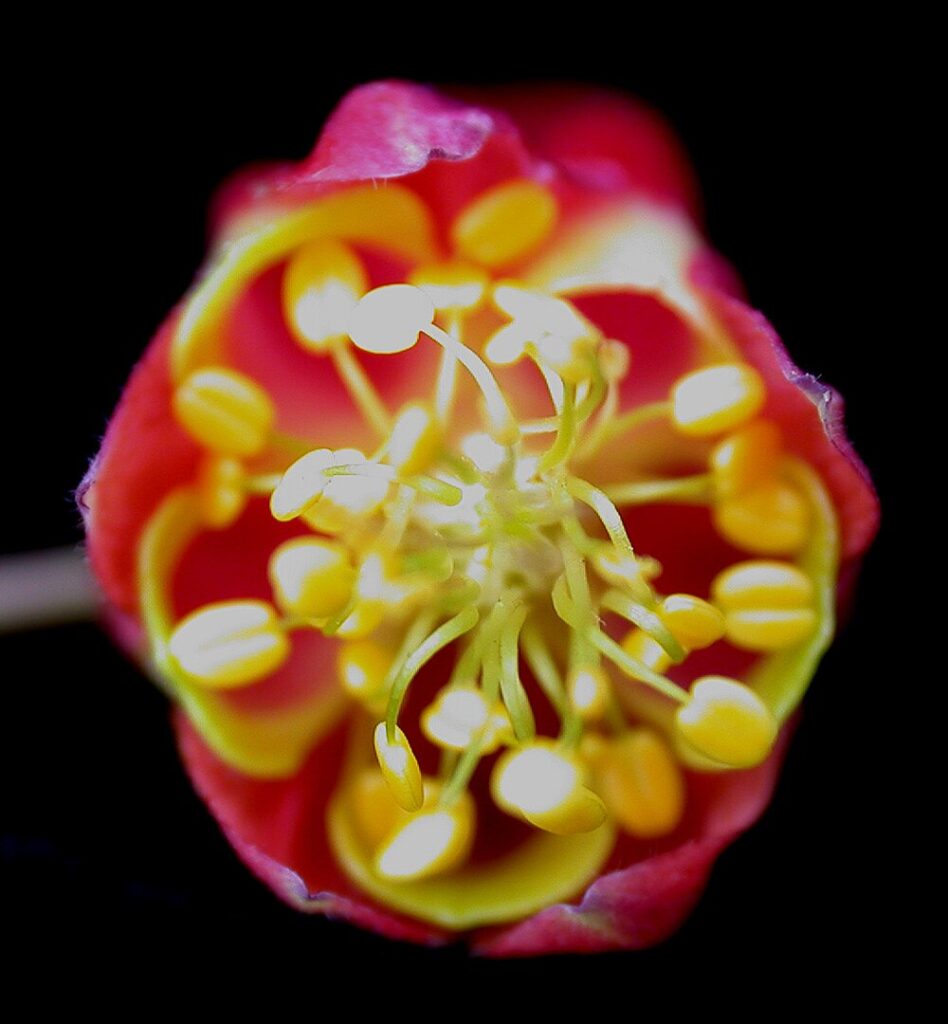
Cut Flower Harvesting and Vase Life
Wild columbine makes an excellent cut flower, with its delicate nodding blooms adding graceful charm to floral arrangements.
Harvest flowers early in the morning when they have just opened for the longest vase life, cutting stems at an angle and placing immediately in cool water.
The unique red and yellow spurred flowers can last 5-7 days in arrangements, though their relatively short vase life makes them best suited for casual bouquets rather than formal displays.
Seed Collection and Storage Methods
Seed collection is straightforward and rewarding for gardeners wanting to expand their plantings or share with others. Watch the distinctive papery seed pods carefully as they mature 6-8 weeks after flowering, turning from green to brown.
Harvest seeds by holding a paper bag over the stem and gently tapping the pods, or cut entire stems and hang them upside down in paper bags to catch falling seeds.
Store completely dry seeds in labeled envelopes in a cool, dry location where they remain viable for up to two years.
Winter Dormancy and Seasonal Care
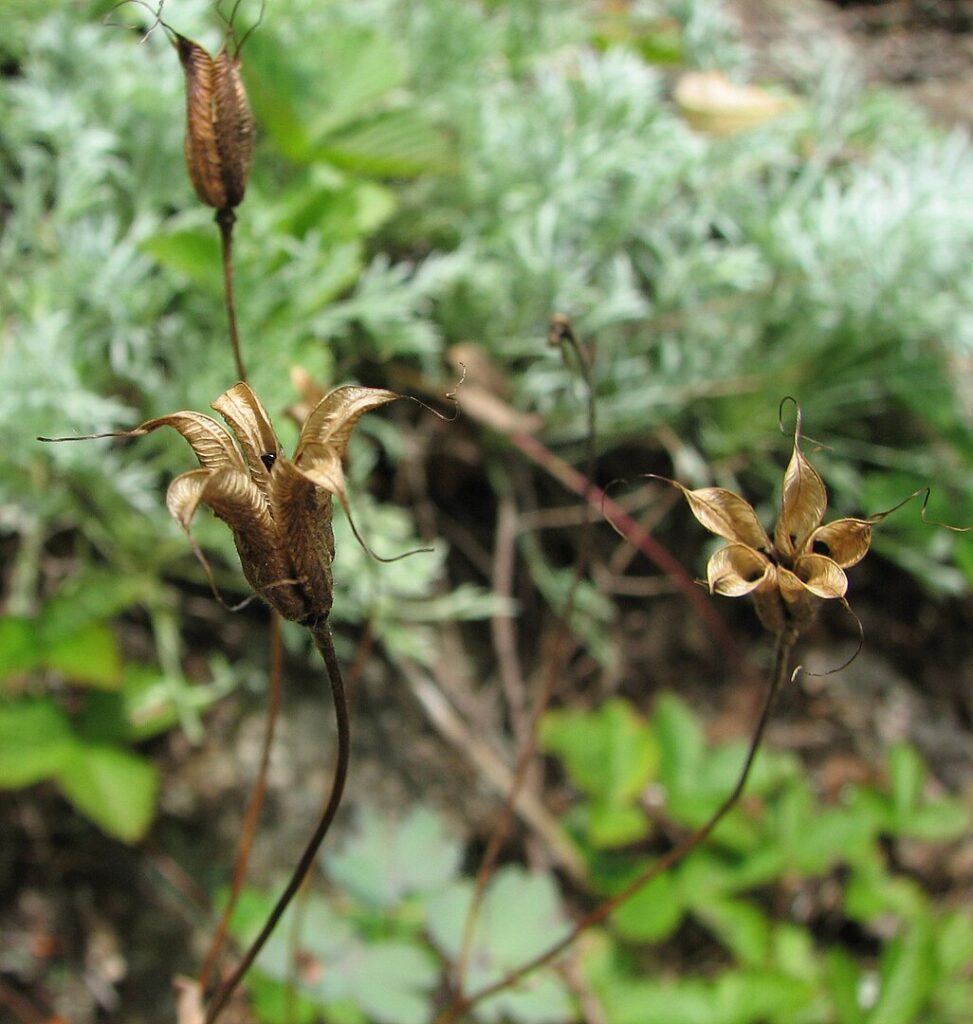
During winter, wild columbine dies back completely to ground level, entering full dormancy as temperatures drop. The plant requires no special winter preparation beyond leaving seed heads standing to provide bird food and natural reseeding opportunities.
A light layer of mulch can be beneficial in zones 3-4 for added root protection, but avoid heavy mulching that might encourage crown rot.
After winter, simply remove any remaining dead foliage in early spring before new growth emerges, and watch for the distinctive blue-green leaves to appear as soil temperatures warm.
The plant’s natural cold hardiness makes it remarkably low-maintenance through seasonal transitions.
Bring Native Beauty and Wildlife Magic to Your Garden
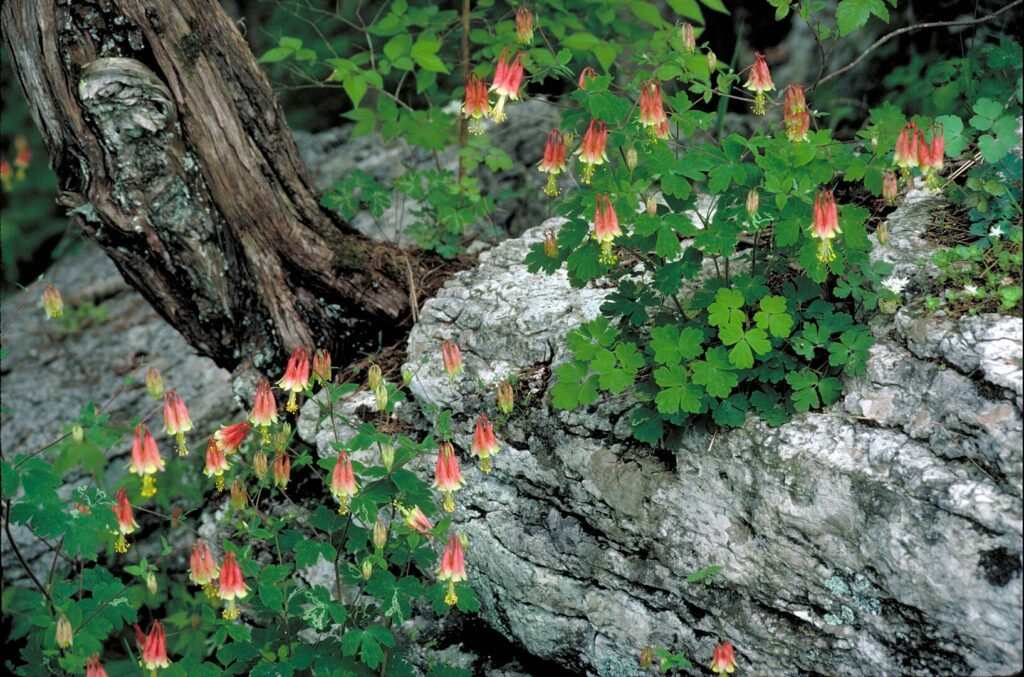
Wild columbine represents the perfect marriage of natural beauty and ecological value, offering gardeners an opportunity to cultivate both stunning spring displays and vital wildlife habitat.
From its distinctive red and yellow spurred flowers that perfectly time with returning hummingbirds to its remarkable adaptability across diverse garden conditions, this native wildflower delivers exceptional rewards with minimal maintenance requirements.
The plant’s ability to naturalize through self-seeding creates ever-expanding colonies that provide years of enjoyment while supporting pollinators, butterflies, and songbirds throughout its growing season.
Whether you’re creating a woodland garden, adding color to shaded borders, or establishing a pollinator-friendly landscape, growing wild columbine provides unmatched versatility and charm.
Its drought tolerance once established, deer resistance, and ability to thrive in challenging locations make it an ideal choice for both novice and experienced gardeners seeking low-maintenance native plants.
Start growing wild columbine by sowing these remarkable native seeds and become part of the growing movement to restore native plant communities while creating beautiful, sustainable gardens.
Featured Image: By James St. John – Aquilegia canadensis (eastern red columbine) (Natural Bridge State Park, northeast of Leland, Wisconsin, USA) 1, CC BY 2.0, Link
